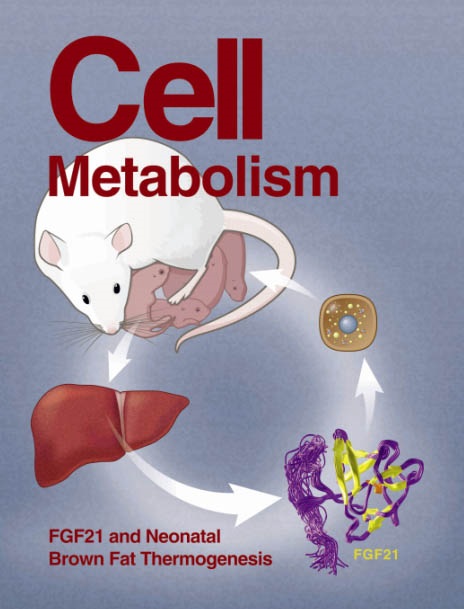Ceramide-induced FGF13 impairs systemic metabolic health
IF 30.9
1区 生物学
Q1 CELL BIOLOGY
引用次数: 0
Abstract
Ceramide accumulation impairs adipocytes’ ability to efficiently store and utilize nutrients, leading to energy and glucose homeostasis deterioration. Using a comparative transcriptomic screen, we identified the non-canonical, non-secreted fibroblast growth factor FGF13 as a ceramide-regulated factor that impairs adipocyte function. Obesity robustly induces FGF13 expression in adipose tissue in mice and humans and is positively associated with glycemic indices of type 2 diabetes. Pharmacological or genetic inhibition of ceramide biosynthesis reduces FGF13 expression. Using mice with loss and gain of function of FGF13, we demonstrate that FGF13 is both necessary and sufficient to impair energy and glucose homeostasis independent of ceramides. Mechanistically, FGF13 exerts these effects by inhibiting mitochondrial content and function, metabolic elasticity, and caveolae formation, which cumulatively impairs glucose utilization and thermogenesis. These studies suggest the therapeutic potential of targeting FGF13 to prevent and treat metabolic diseases.

神经酰胺诱导的FGF13损害全身代谢健康
神经酰胺的积累损害了脂肪细胞有效储存和利用营养物质的能力,导致能量和葡萄糖稳态恶化。通过比较转录组筛选,我们发现非规范、非分泌的成纤维细胞生长因子FGF13是一种神经酰胺调节因子,可损害脂肪细胞功能。肥胖强烈诱导小鼠和人类脂肪组织中FGF13的表达,并与2型糖尿病的血糖指数呈正相关。神经酰胺生物合成的药理或遗传抑制可降低FGF13的表达。通过FGF13功能缺失和增强的小鼠,我们证明了FGF13对能量和葡萄糖稳态的影响是必要和充分的,不依赖于神经酰胺。在机制上,FGF13通过抑制线粒体含量和功能、代谢弹性和小泡形成来发挥这些作用,从而累积损害葡萄糖利用和产热。这些研究提示靶向FGF13预防和治疗代谢性疾病的治疗潜力。
本文章由计算机程序翻译,如有差异,请以英文原文为准。
求助全文
约1分钟内获得全文
求助全文
来源期刊

Cell metabolism
生物-内分泌学与代谢
CiteScore
48.60
自引率
1.40%
发文量
173
审稿时长
2.5 months
期刊介绍:
Cell Metabolism is a top research journal established in 2005 that focuses on publishing original and impactful papers in the field of metabolic research.It covers a wide range of topics including diabetes, obesity, cardiovascular biology, aging and stress responses, circadian biology, and many others.
Cell Metabolism aims to contribute to the advancement of metabolic research by providing a platform for the publication and dissemination of high-quality research and thought-provoking articles.
 求助内容:
求助内容: 应助结果提醒方式:
应助结果提醒方式:


